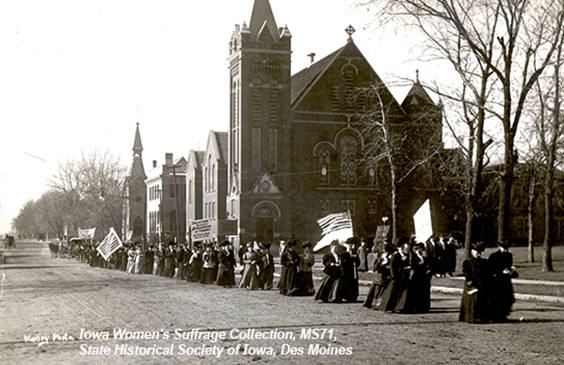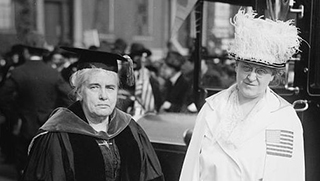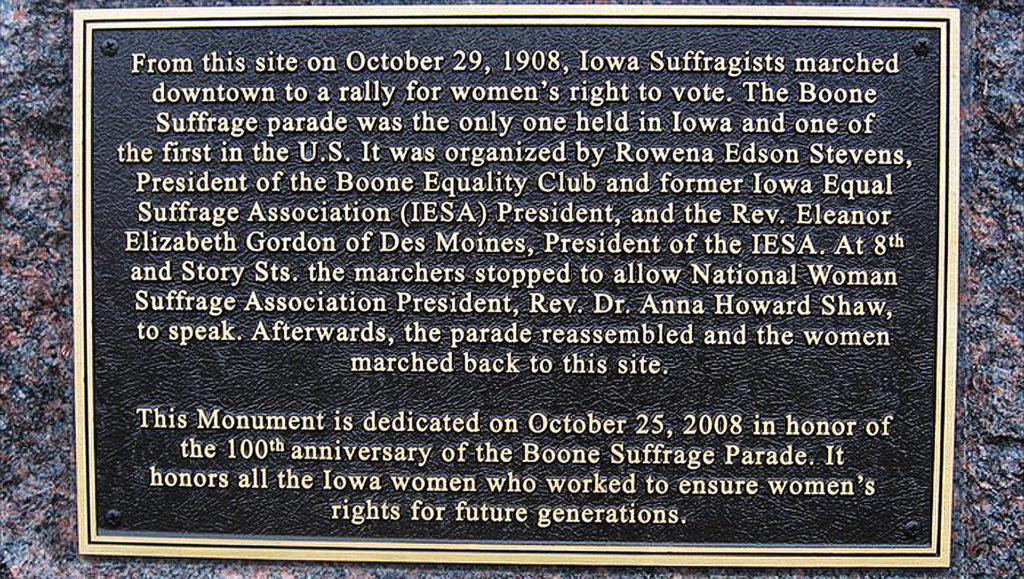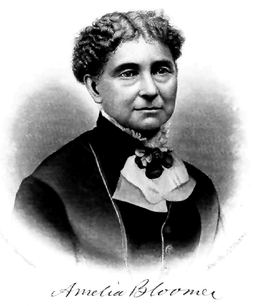As you travel along the Lincoln Highway Heritage Byway you’ll find many cultural and historic points of interest — including a retracing of footsteps taken by many responsible for pioneering women’s suffrage in Iowa. This March, we commemorate Iowa History and Women’s History month, let’s take a look at a couple of related stories.
Championing the ensuing parade was a car transporting the then National Women Suffrage Association President Dr. Anna Howard Shaw.
The Bloomer family settled in Council Bluffs in 1855 where Amelia continued her activism and was Iowa’s first resident to speak publicly for women’s suffrage. She started the Soldiers’ Aid Society of Council Bluffs to assist Union soldiers and served as president of the Iowa Suffrage Association from 1871-1873.
The next time you’re traveling the western edge of the Lincoln Highway in Iowa be sure to visit Council Buff’s Fairview Cemetery and pay respect to the American women’s movement pioneer Amelia Jenks Bloomer.




